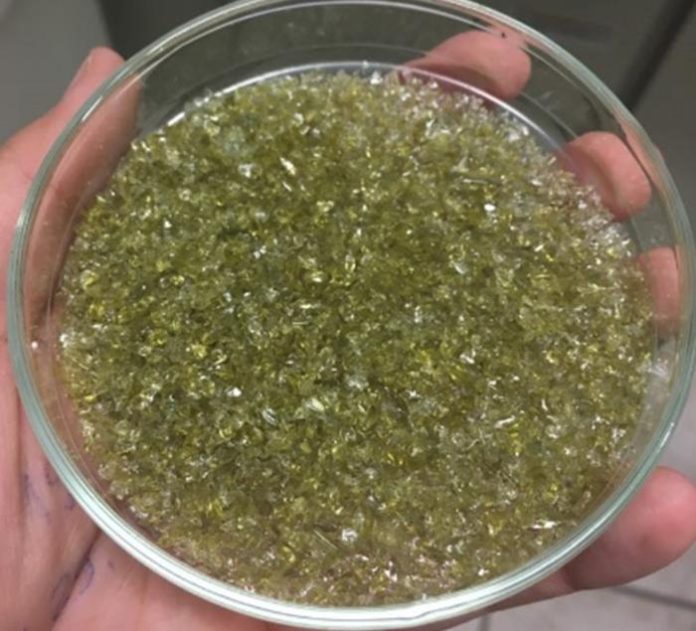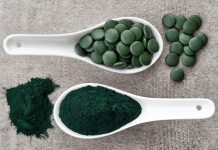
Glass fertiliser beads offer a sustainable solution to agricultural nutrient delivery. Researchers have developed these beads for controlled release, minimising environmental harm while sustaining plant growth. This innovation promises efficient, eco-friendly fertilisation
The relentless demand for agricultural productivity to feed a growing global population has led to an overreliance on conventional fertilisers. While these fertilisers boost crop yields, their excessive and inefficient use poses a significant environmental threat, polluting waterways and contributing to greenhouse gas emissions.
In a bid to address this pressing issue, researchers at the University of São Paulo, Dr. Eduardo Ferreira and Dr. Danilo Manzan, developed a novel solution: glass fertiliser beads. These beads offer a sustained nutrient delivery system that promises to enhance plant growth while minimising environmental impact. This innovation, detailed in a recent publication in ACS Agricultural Science & Technology, represents a significant step towards more sustainable agricultural practices.
The problem with conventional fertilisers
Traditional fertilisers, rich in essential nutrients like nitrogen, phosphorus, and potassium, are crucial for replenishing soil fertility and supporting crop growth. However, their soluble nature leads to rapid nutrient release, often exceeding the plants’ uptake capacity. This results in nutrient leaching into groundwater, causing eutrophication of water bodies and harmful algal blooms. Additionally, the release of nitrous oxide, a potent greenhouse gas, contributes to climate change. The need for frequent reapplication of these fertilisers further exacerbates these environmental problems, highlighting the urgent need for a more efficient and sustainable nutrient delivery system.
Glass beads: A controlled-release solution
Researchers led by Danilo Manzani and Eduardo Ferreira have turned to glass beads as a potential solution. These beads, composed of a blend of micro- and macronutrients, are designed to release nutrients in a controlled and sustained manner. The researchers synthesised glass particles of varying sizes, ranging from less than 0.85 millimetres to 2 millimetres, and tested their nutrient-release properties in both water and soil-mimicking buffer solutions.
Consistent nutrient release and enhanced plant growth
The study revealed that the glass beads consistently released nutrients over an extended period of 100 hours, demonstrating their ability to provide a steady supply of essential elements to plants. Unlike traditional fertilisers that deliver a rapid surge of nutrients followed by a decline, the glass beads ensured a gradual and sustained nutrient release, minimising losses through leaching.
In plant growth experiments, the researchers compared the effects of the glass beads with those of a traditional nutrient solution. While the nutrient solution initially stimulated rapid plant growth, its effect quickly diminished. In contrast, the glass beads provided a sustained growth boost, regardless of particle size, with the overall growth rate depending on the bead dosage. This indicates that the glass beads can effectively maintain plant growth over time, reducing the need for frequent fertiliser applications.
Environmental compatibility and ecotoxicity assessment
A crucial aspect of this research was the assessment of the glass beads’ environmental compatibility. To evaluate potential ecotoxicity, the researchers exposed lettuce and onion seeds to the glass fertiliser. The results showed that the germination rate and cell health of the seeds exposed to the glass beads were comparable to those of seeds that were either untreated or treated with soluble nutrients. This suggests that the glass beads are not harmful to plant life and pose minimal environmental risks.
Tailoring nutrient release for specific plant needs
One of the significant advantages of the glass fertiliser beads is their versatility. The researchers emphasise that the composition and size of the beads can be tailored to meet the specific nutrient requirements of different plant species and soil types. This customisation allows for optimised nutrient delivery, ensuring that plants receive the precise amount of nutrients they need for healthy growth.
Future implications and sustainable agriculture
The development of glass fertiliser beads represents a significant advancement in sustainable agriculture. By providing a controlled and sustained nutrient release, these beads reduce nutrient losses, minimise environmental pollution, and enhance plant growth. The research highlights the potential of this innovative technology to transform agricultural practices, contributing to a more sustainable and environmentally responsible food production system.
The study’s authors acknowledge the support of various funding agencies, including the São Paulo Research Foundation, the Center for Research, Technology, and Education in Vitreous Materials, and the National Council for Scientific and Technological Development.
This collaborative effort underscores the importance of continued research and development in sustainable agriculture. As the global population continues to grow, innovations like glass fertiliser beads offer a promising pathway towards ensuring food security while safeguarding the environment.










